Running uphill is one of the most challenging running workouts you can take on, but it can also be the most rewarding and – dare I say it – enjoyable forms of running!
Don’t believe me?
Read on, because I think you’ll be convinced by the time you get to the end of this post: I’m sharing everything you need to know to enjoy uphill running (whether you’re road or trail running), including:
- The benefits of running uphill (both mentally and physically) from someone who’s obsessed with chasing summits
- How to run hills properly with proper form
- Mental strategies for when the going gets tough, and
- Effective hill training workouts to become a better (and faster) uphill runner.
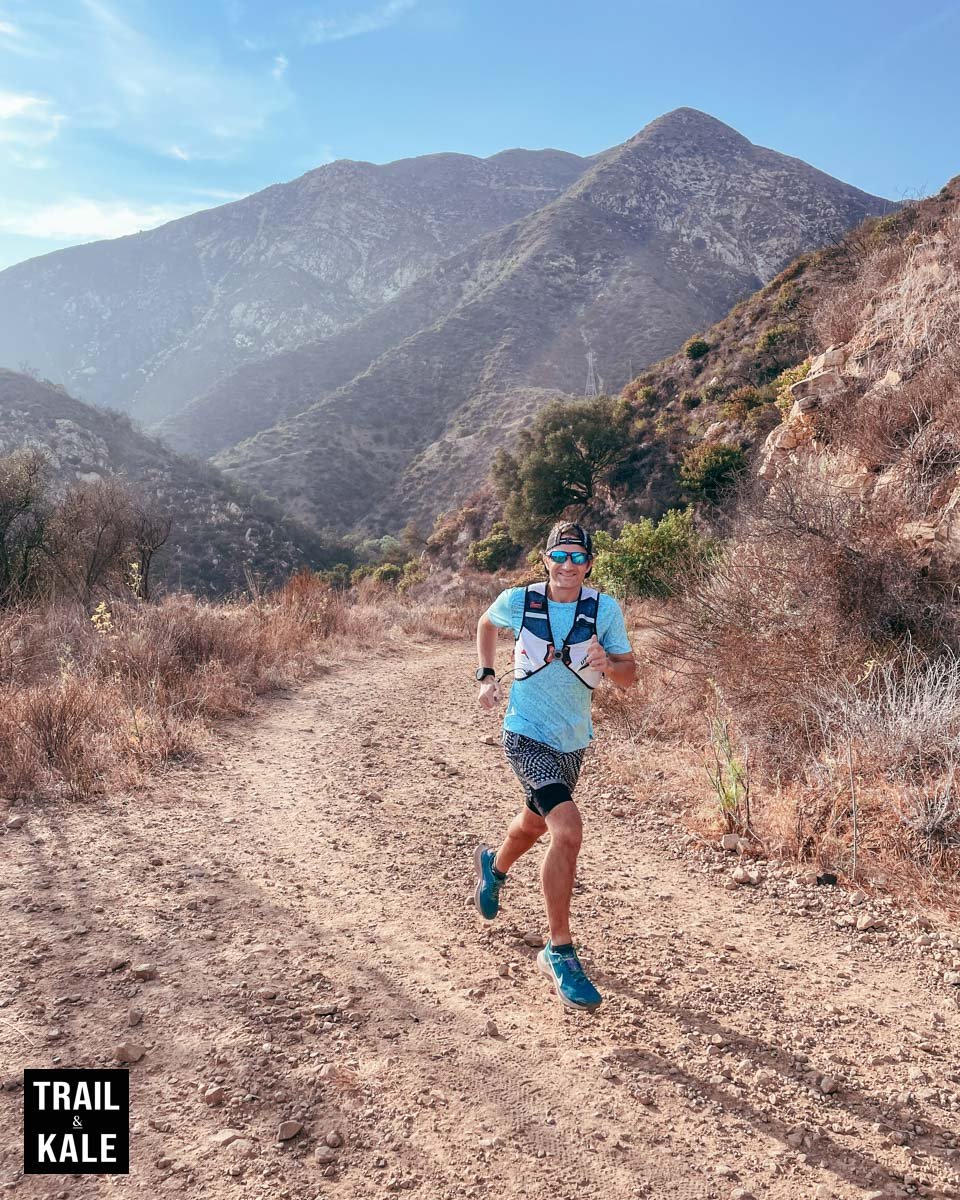
Why is running uphill so hard?
Let’s start out by explaining why running uphill seems so hard.
Well, if you’re already a runner or have some experience with other forms of cardio exercise then you’ll know that the toughest workouts such as running up hills, or speed interval training, are also the most effective if you’re looking for performance and fitness gains.
Running uphill is challenging because it requires extra effort – you have to work harder and expend a lot of energy relative to flat road running to overcome the force of gravity, while maintaining proper form despite the gradient of the incline you’re running on.
Uphill running targets muscles that are not used as much when running on flat terrain, making it a great workout for building strength and endurance, although if you don’t have the best technique, then you’ll probably feel it the next day in the form of sore hamstrings or tight calves.
As a trail and ultrarunner, being able to effectively run up (as well as down) hills is an absolute necessity for me, especially given 95%+ of all trail and ultra races are going to have some, if not A LOAD of hills.
This is an absolute guarantee if they take place in mountainous regions such as, to name a few places I’ve raced – the French Alps (including the UTMB OCC race), the Californian Sierras, New Zealand’s South Island and the Spanish Pyrenees.
The 6 benefits of running uphill
There are loads of mental and physical benefits of running uphill and incorporating hills into your training.
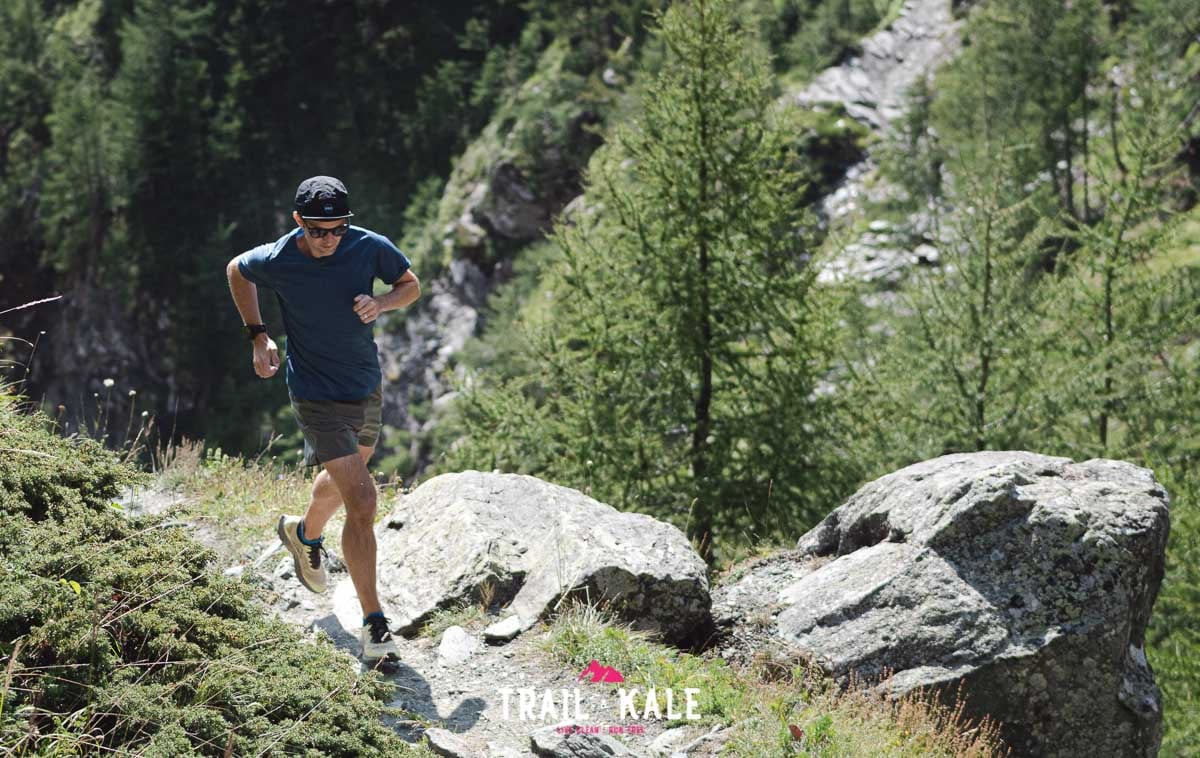
Here are the 6 key benefits, that apply whether you’re running up a hilly road or if you’re heading off-road on a trail run.
1. Increases muscular strength
Running uphill (whether on an actual hill or with an incline setting on your treadmill) engages your lower body muscles in a way that flat-surface running does not.
It targets your leg muscles (especially your quads, glutes, calves, and hamstrings) and core muscles, which helps to build overall leg strength and increase endurance.
2. Enhances cardiovascular fitness
Because your body is working that much harder, going uphill is more challenging on your cardiovascular system, making your heart and lungs work harder to provide oxygen to your muscles.
This means that it’s pretty much unavoidable that your breathing rate and heart rate will be elevated on any hill you tackle.
However, this effort, in turn, helps to improve your cardiovascular fitness and endurance, giving you a valuable boost in VO2 max capacity, which in turn improves your ability to run faster and run much longer.
3. Boosts calorie burn
Running uphill is a high-intensity exercise that burns more calories than running on flat surfaces.
Running with an elevated effort level helps to increase your metabolism, which can lead to greater calorie burn even after your workout is complete.
4. Improves running form
Running uphill encourages you to focus on maintaining proper form; slouching or leaning too far forward can make the ascent even more difficult.
In the next section I explain what good uphill running form looks like to help you ascend efficiently, with good running economy.
5. Builds mental toughness
Running uphill requires mental toughness and grit, which can be applied to other areas of your life.
Seriously.
It’s one of the most challenging things you can do as a runner, but overcoming the challenge of uphill running can boost your confidence and motivation to tackle other difficult tasks.
Plus, once you reach the top of those climbs, you’re usually rewarded with enjoyable views! Spending time to take in vast landscapes and scenery can help put other aspects of life in perspective.
6. Provides variety to your workouts
Running uphill can add variety and excitement to your workouts, breaking up the monotony of running on flat terrain. It can also be a fun way to explore new trails and scenery.
I like to run a hill repeat session instead of sprint intervals, for example, when I’m looking to mix up my race training plan – especially if I’m training for a hilly event such as a trail marathon or 50k that can have upwards of 4,000m elevation gain along the way.
Did you know there are trail races that go exclusively uphill?
If you’re a fan of Type 2 fun then you may be interested to know that there are entire races dedicated to running uphill (almost) exclusively.
The most popular type of race that does this is what’s known as a ‘Vertical Kilometer’ race – they’re hugely popular in the European trail and mountain running scene!
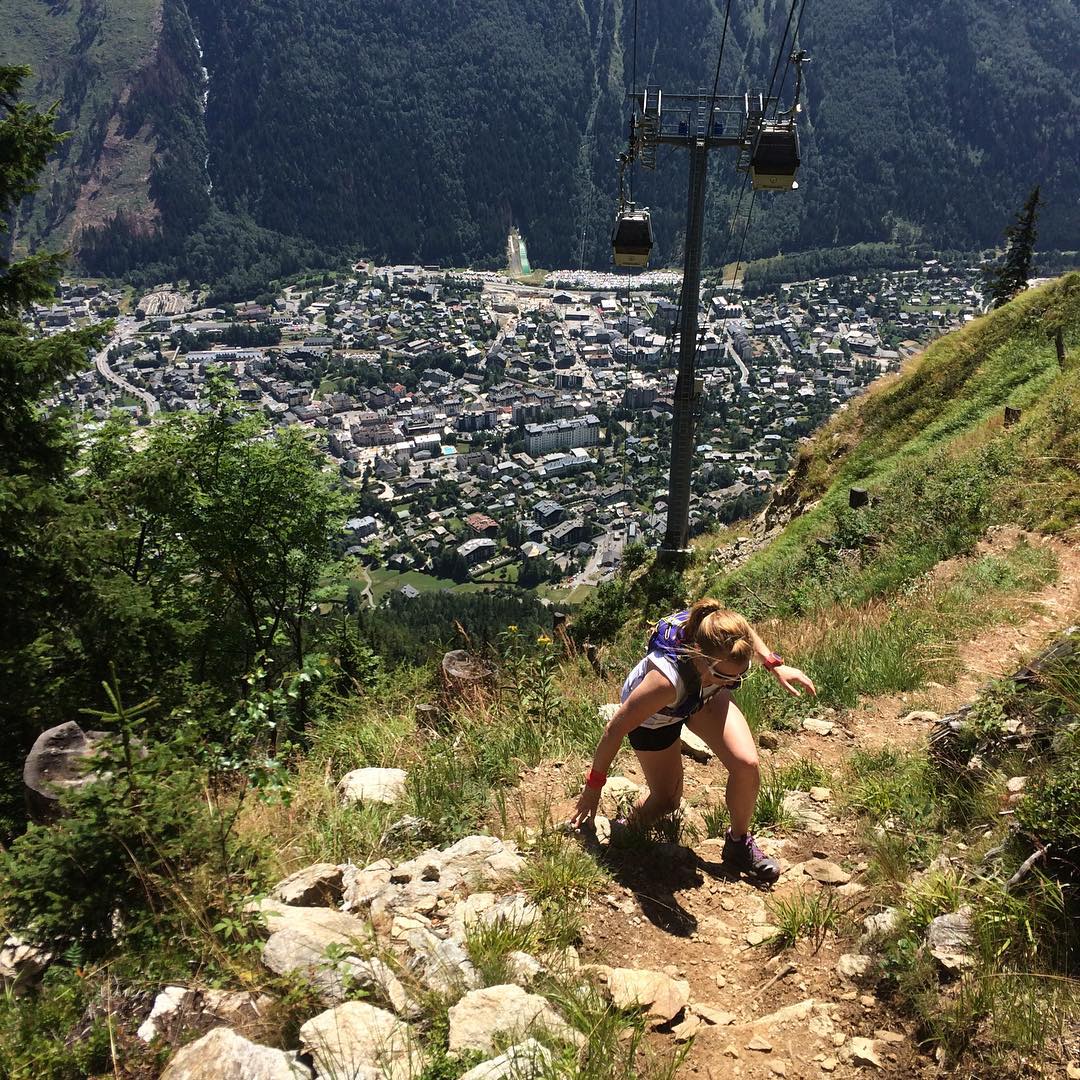
To learn more about these races, including their length, gradient and duration, as well as all the epic mountain locations you can do one in all over the world, read the best vertical kilometer races in the world.
Proper uphill running form
Here are some tips to improve your uphill technique and form:
Look up: Keep your eyes fixed on the top of the hill to help maintain proper posture.
Lean forward slightly at your ankles: Lean forward from your ankles, not your waist, to help propel your body up the hill.
Pump your arms: Swinging your arms will help power your body up the hill. Keep your arms bent at a 90-degree angle and swing them forward and back.
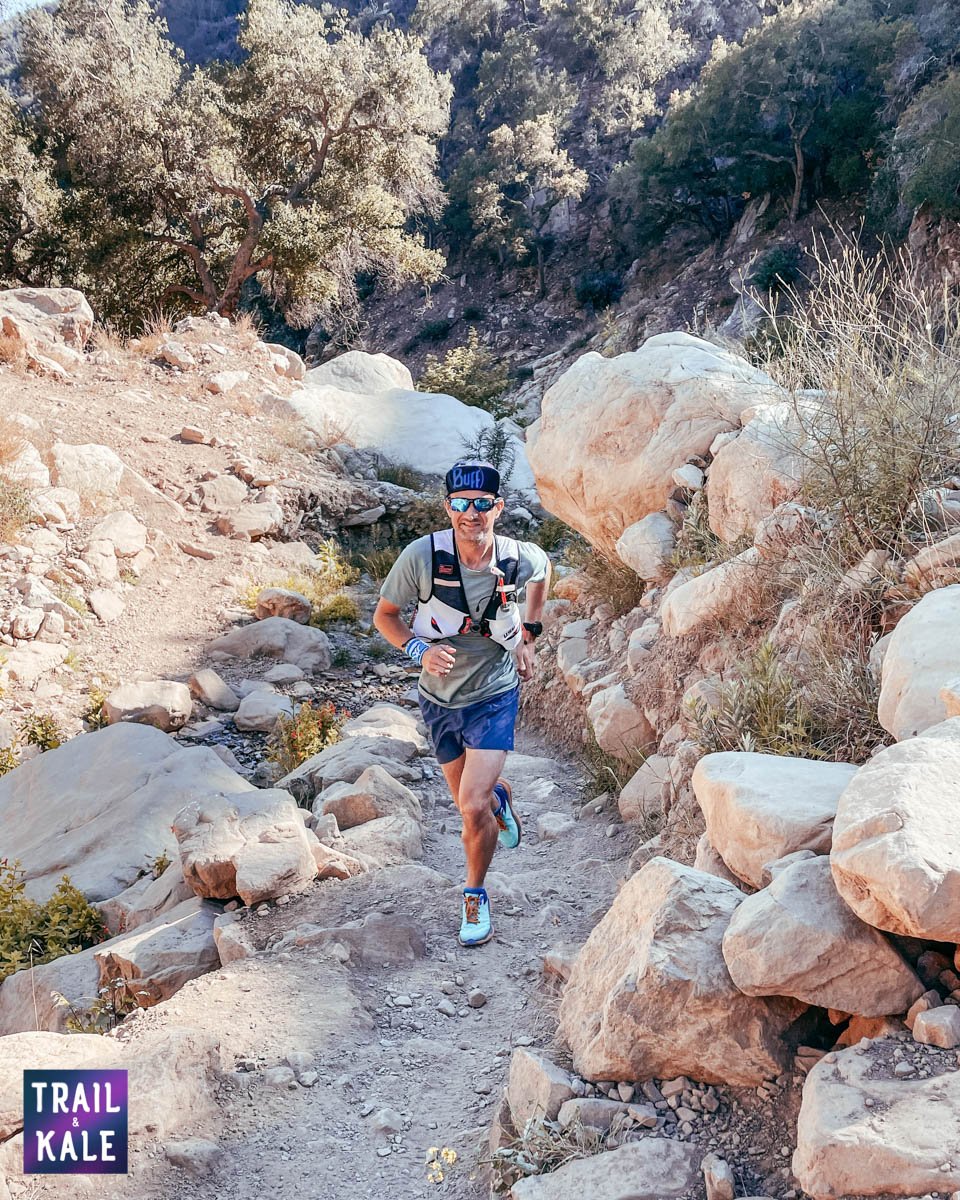
Shorten your stride: Avoid overstriding, as this can waste energy, cause you to lose momentum and make the ascent more difficult.
Instead of taking huge strides, take shorter, quicker steps, which may mean you run uphill at a higher-than-normal cadence (stride rate).
Run with a consistent effort: Find an uphill running speed that you feel you can sustain for the full hill. This may be slower for steeper or longer hills.
I like to think about changing down gears, as you would if riding a mountain bike uphill. Get into an ‘easy’ running gear and crank out those steps until you reach the top!
Land midfoot: Land on the midfoot or forefoot instead of your heel.
This will help you get into a good rhythm for forward momentum and avoid landing too far back on your foot, which can place a lot of strain on your joints and cause you to exert more energy than necessary.
Engage your core: Keep your core engaged to maintain proper posture and keep your chest from slouching forward.
Breathe deeply: Take deep breaths to provide your body with the oxygen it needs to power up the hill.
Focus on maintaining a consistent, deep breathing rate – read our post on running breathing techniques for more tips and suggestions on how to breathe ‘properly’ while running.
By maintaining proper uphill running form, you can improve your running efficiency and reduce the risk of injury.
Plus, as a bonus, these tips on running form should help you feel stronger and move faster when running on flat ground, too!
Is it ever ok to walk up hills during your run?
YES, and I encourage it!
In fact, in the trail running world, and especially mountainous races and longer endurance efforts such as trail marathons and ultra-marathons, adopting a certain walking technique when going up steeper hills is not only ok, it’s the most efficient option for most people to get up the hill.
Once a hill gets so steep you can’t efficiently run up it, we trail and ultrarunners shift to what’s referred to as ‘power-hiking‘.

Power hiking is the secret to moving fast uphill when the gradient is too steep to run.
Power hiking up a steep incline isn’t a casual walk in the park, but more of a focused, rhythmic hike that efficiently pushes you uphill towards the top.
To effectively power hike, many of the strategies for efficient climbing remain the same, but you’re hiking, not running up the hill, with your hands on your knees (or more accurately, on your thighs, just above your knees) so you can use your upper body for added power.
Mental strategies for hill running
Running uphill can be mentally challenging, as it requires extra effort and can be intimidating… if you let it.
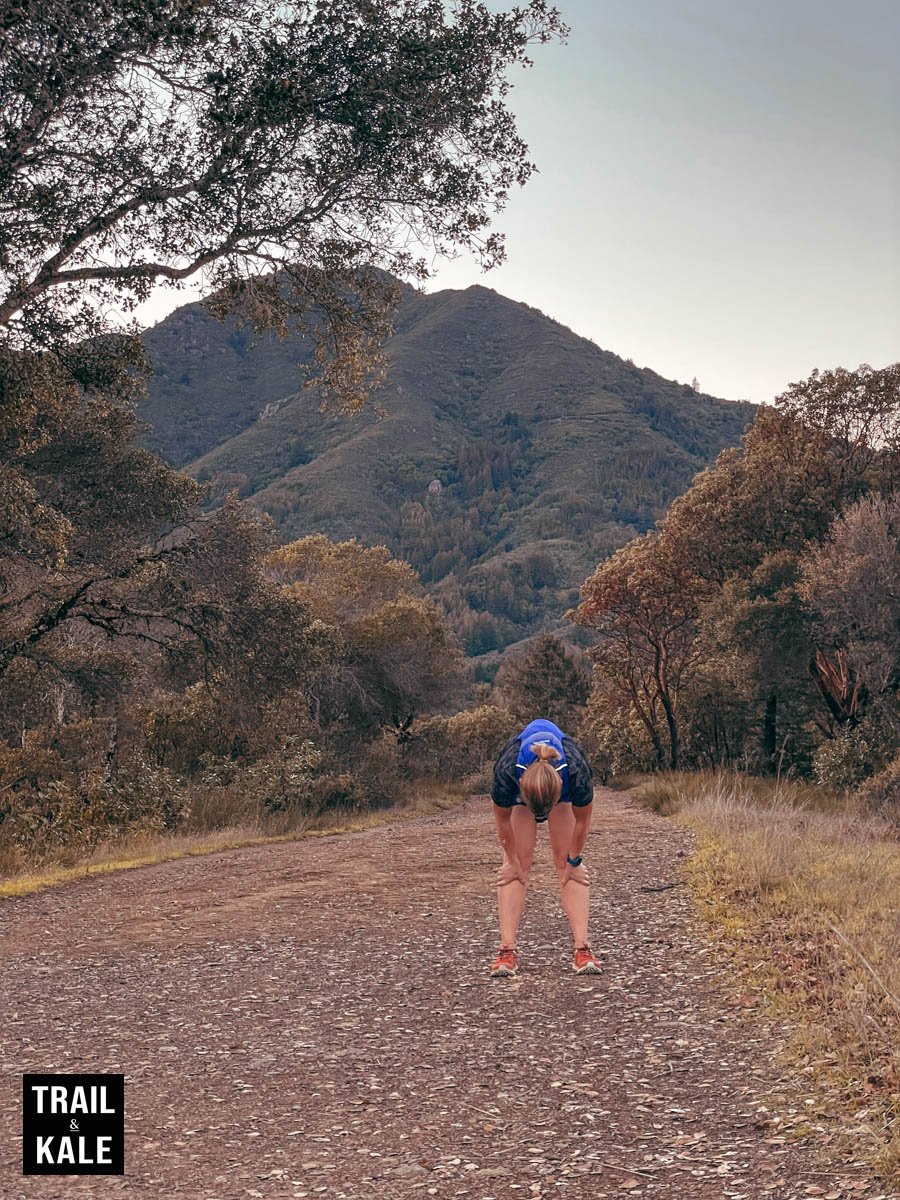
In this section, I want to share with you some insights that really helped me improve my attitude towards uphill running when I was a new trail runner, and I just know you’ll find them useful next time you’re facing an incline during a race or training run.
Visualization: Visualize yourself conquering the hill and reaching the top. Imagine how good it will feel to complete the climb and use that as motivation to keep going.
Positive self-talk: Use positive affirmations to boost your confidence and keep your mind focused on the task at hand. Repeat mantras such as “I am strong,” or “I can do this” to keep yourself motivated.
Just think – it’s a privilege to not only be able to run, but to be able to face the challenge of running UP THAT HILL!
Break the hill into sections: Don’t focus on the entire hill at once. Instead, break it up into smaller sections and focus on reaching each section one at a time.
Smaller, more achievable goals (or ‘milestones’) are much less daunting.
And by the way – this is also a great tip for breaking down a long distance race such as a half marathon, marathon or 50k+ ultramarathon into mentally-manageable chunks!
Focus on your breath: Concentrate on your breathing and use it to power yourself up the hill. Take deep breaths and exhale forcefully to help propel yourself forward.
By using these strategies, you can overcome the mental challenges of running uphill and push yourself to reach the top. Not only that, but you’ll subconsciously start to shift how you think about uphills.
You’ll start thinking about those steeper longer hills not as something to avoid, but actually as a great challenge to set yourself next time you want to do some intensive hill training!
Hill training workouts
Uphill training can be one of the most effective ways to work on your overall running technique.
Incorporating hill reps into my training (which I did when I started to spend more time trail running than on the roads) allowed me to significantly improve my uphill running speed and technique, and I’m excited to share some of my favorite hill training sessions for you to try for yourself.
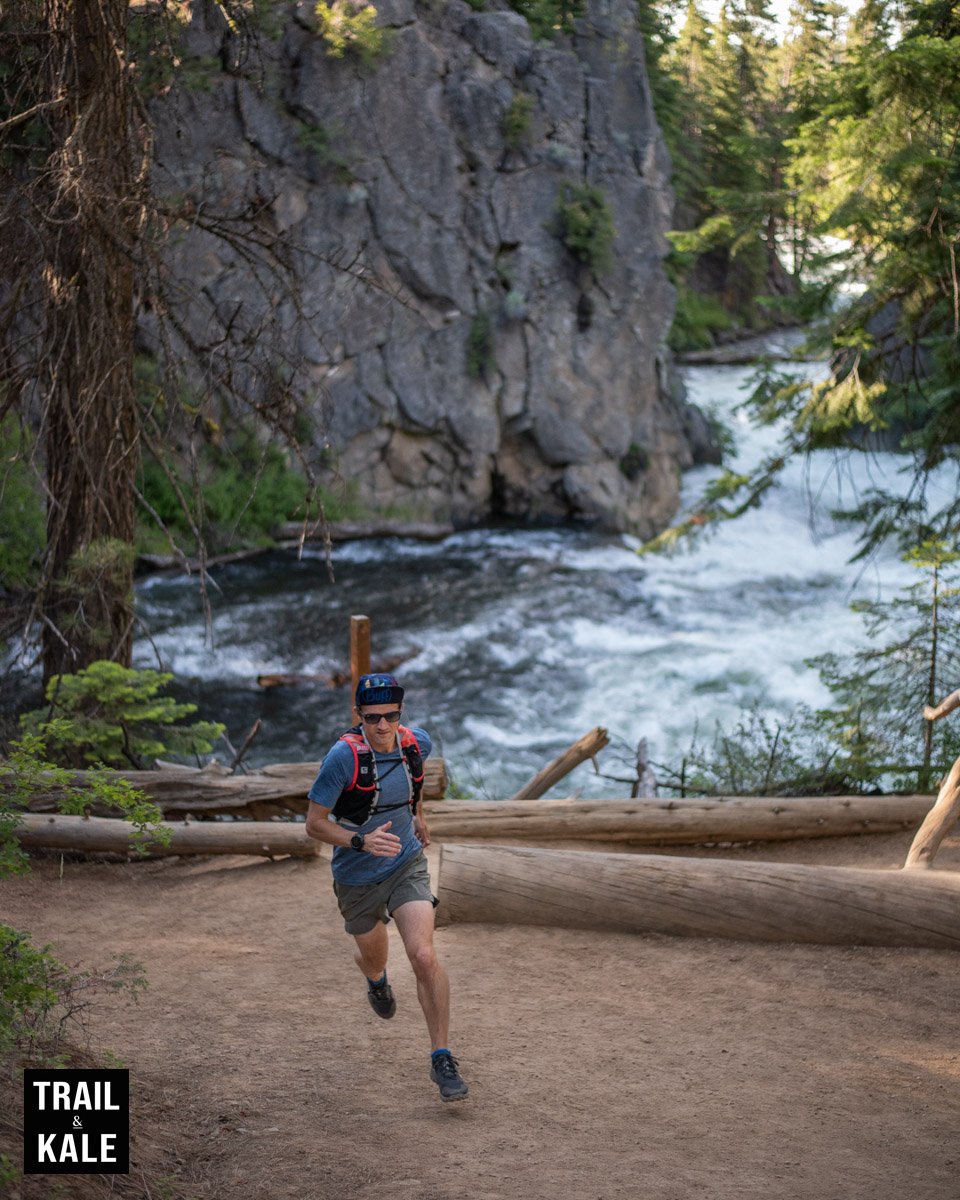
Steady hill repeats
Focus: work on uphill running form and building strength.
- Warm-up: 5-10 minutes of light jogging, followed by dynamic stretches.
- Run up the hill at a steady pace that you can sustain for 90 seconds without gasping for breath, then run comfortably back down, paying attention to your downhill running form.
- Repeat for 10 repetitions.
- Cool-down: 5-10 minutes of light jogging or walking, followed by static stretches.
Challenging steep hill sprints
Focus: Attack steeper hills to push your limits and build speed and power. Equally great for road runners and trail runners.
- Warm-up: 5-10 minutes of light jogging, followed by dynamic stretches.
- Find a steep hill (or boost the incline on your treadmill).
- Sprint up the hill for 30-45 seconds, then walk or jog back down.
- Repeat for 15 repetitions.
- Cool-down: 5-10 minutes of light jogging or walking, followed by static stretches.
Endurance hill climbs
Focus: Get comfortable being uncomfortable running uphill for longer durations, building endurance for trail running in particular.
- Warm-up: 5-10 minutes of light jogging, followed by dynamic stretches.
- Find a long hill that will take at least 4-5 minutes to run up.
- Run steadily up the hill through to the top, focusing on your form, breathing and mental strategies as discussed above, then walk or jog back down.
- Repeat for 4-5 repetitions.
- Cool-down: 5-10 minutes of light jogging or walking, followed by static stretches.
Power hiking practice
Focus: Practice power hiking with the objective of getting it down to a fine art before your next race day.
- Warm-up: 5-10 minutes of light jogging, followed by dynamic stretches.
- Find a very steep hill – the longer the better (you don’t necessarily have to go all the way to the top)
- From the bottom, power-hike up either to the top or for 4-5 minutes in one go, whichever is shortest.
- Run back down, paying attention to downhill running form.
- Repeat for 4-5 repetitions.
- Cool-down: 5-10 minutes of light jogging or walking, followed by static stretches.
Remember to always listen to your body and adjust the workout to your fitness level. Gradually increase the intensity and duration of the workout over time to avoid injury and achieve maximum benefits.
Safety considerations for running on hills
There are a few important safety considerations to have in mind when doing your hill training, including:
- Wearing suitable footwear with good traction, such as appropriate trail running shoes, especially if you’re hill-training on trails or wet surfaces.
- Choosing a safe and well-lit route
- Starting with a gradual incline and gradually increasing the intensity over time.
It’s also important to maintain good form and avoid overexertion, especially on steep descents where it can be easy to trip if you’re too exhausted, it’s low light or you’re not staying focused on your next few steps.
Always listen to your body and adjust your workout accordingly to avoid injury.
In summary
What did I tell you?
I hope that by now, having read all my top tips and advice for efficiently running up hills you’re so convinced of the benefits of hill training that you can’t wait to head out the door (or jump on the treadmill) and tackle your next hill with better form, greater confidence and focus!
Incorporating some hill training sessions into your run training plan, will reap great rewards in terms of the running speed, strength, and conditioning you’ll achieve.



![The Best Trail Running Shoes [2024] The Best Trail Running Shoes [2024]](https://www.trailandkale.com/wp-content/uploads/2024/02/best-trail-running-shoes-Trail-and-Kale-Recommends-2024-110x75.webp)


